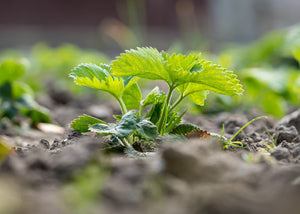

Bacteria in your stomach? Yes. Good bacteria is something you want growing and flourishing in the depths of your gut. Friendly flora is what makes your body function regularly. These colonies develop over time when you are young and are heavily influenced by your environment. It is also incredibly sensitive to even the most mild changes, and will adjust itself quickly.
Because your gut is a direct reflection of where you live, there is a growing interest in a farming practice called regenerative farming. But before we learn about this technique, we’re first going to put on our lab coats and explore why your gut is calling all of the shots.
The Power of the Gut
Your gut microbiome is made up of trillions of naturally occurring microorganisms that contribute to your health by synthesizing various nutrients from food. This includes essential vitamins and minerals that support immune function and promote cell regeneration, among other bodily functions. Your gut plays a leading role in maintaining good immune health including determining your risk of developing many chronic diseases such as:
- Type 2 diabetes
- Inflammatory bowel disease
- Obesity
- Cardiovascular disease
- Cancer
Needless to say, diet is a major contributor to your overall health. It’s no wonder that the produce you eat and the soil in which is grown can have an astounding impact on what goes on in your gut microbiome. On top of that, it is inside our gut where we grow resistance to bad bacteria by reinforcing the protective barrier between the intestine and the rest of our body.
You might be wondering, what is the connection between my gut function and the farming process of the food I eat? Let’s take a dive into what goes on with your food before it winds up in a beautiful array on your plate.

What is Regenerative Farming?
The overarching purpose of regenerative farming practices is to rebuild the organic matter within soil and to restore the biodiversity of degraded soil. Bacteria and fungi naturally found in the soil’s microbiome help the absorption of nutrients into plants for increased mineral content and nutrient density.
The following are just some of the practices of regenerative farming.
- No-till or limited-till practices, allowing the fungal network within the soil to flourish and transport vitamins and minerals to plants and crops.
- Cover crops to protect the soil when it is not being used. The use of certain grasses or bean crops is common for this purpose.
- Crop rotation to replenish the nutrients absorbed by the harvested crop. This lowers the need for synthetic fertilizer and pesticides.
- Compost added to the soil for natural microbe replenishment.
These practices greatly improve soil fertility and help yield a much healthier crop for human consumption.
HOW DEGENERATIVE FARMING HARMS SOIL
When farm soil undergoes constant tillage it disturbs the fungal communities. This is devastating to the network of nutrient absorption pathways into plant roots that take time to rebuild. The problem is that once the soil is broken up, it is more vulnerable to erosion and the microbiome doesn’t get a chance to repair itself.
Unused soil exposed to the elements such as too much sun and rain, and a lot of wind falls victim to erosion. The depletion of natural topsoil leads to less biodiversity within the soil microbiome and poor soil health overall. Any crops harvested from this soil in the future will be significantly lacking in the micronutrients vital to human health.
Monocropping, meaning planting the same crop in the same soil over and over, can mean major depletion of certain nutrients from the soil. Farmers might combat this with chemical-based fertilizers. Needless to say, those chemicals are absorbed into the fruits and vegetables that wind up in your kitchen.
Furthermore, having plant diversity has proven to diversify pest populations and therefore reduce pest problems. This means that farmers who rotate their crops don’t rely very much on pesticides. This is a huge deal.
LOSS OF BIODIVERSITY DUE TO CHEMICAL FARMING
Studies show that one major pesticide used in agriculture, diazinon, causes disruption in the gut microbiome. This is due to the destruction and reduction of microbes present in the soil and therefore in our foods. Additional studies show that immigrants coming from rural, agrarian societies to more urban cultures indicate a rapid change in tolerance to allergies and an impared immune system.
CHANGES IN THE GUT MICROBIOME
Dysbiosis occurs when the good bacterial colonies within your gut get out of balance. This confuses your gut and compromises the immune system. A common cause of dysbiosis is accidental consumption of pesticides on unwashed produce. Some symptoms can be mild and your body will fix itself on its own, while some require a doctor’s attention.

Shifting to Regenerative Farming
Because our gut has such a huge say in our overall health, it is becoming increasingly important that we advocate for healthier sourcing of our food products. Buying from local, organic farms might require an extra step in your grocery shopping routine, but it is worth having more of a say over what enters your body. Not to mention, you would be helping to contribute to the big push to support local businesses and farmers.
Even better, you can explore home gardening in your own backyard (or on your porch for you city dwellers). Incorporating soils abundant in microbes and compost tea are some of the best practices to follow if you choose to explore this route.
The bottom line is, a happy gut means a happier life. No matter which way you choose to take care of your stomach and improve the quality of your intestinal flora, your stomach will thank you and your body will thank you.
To your good gut health.





